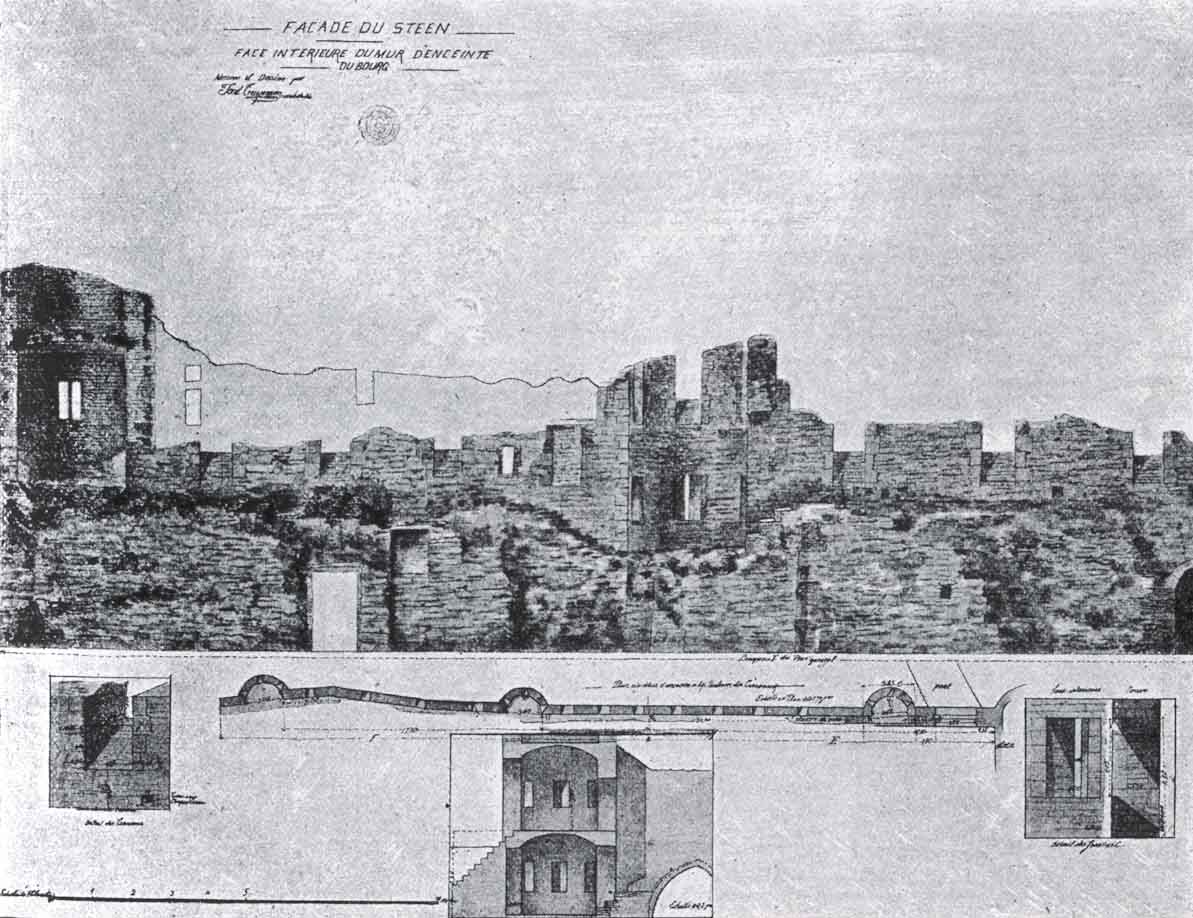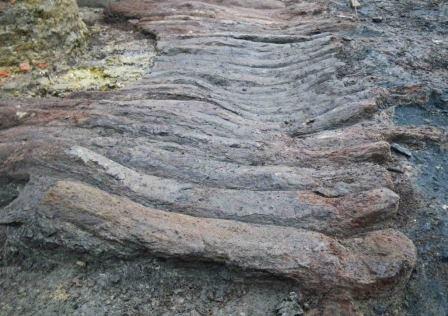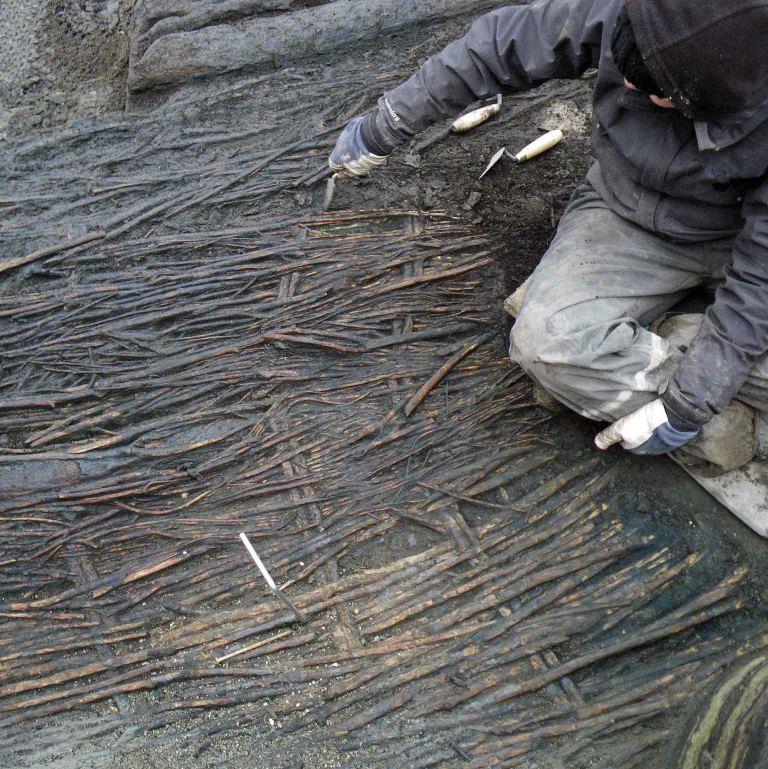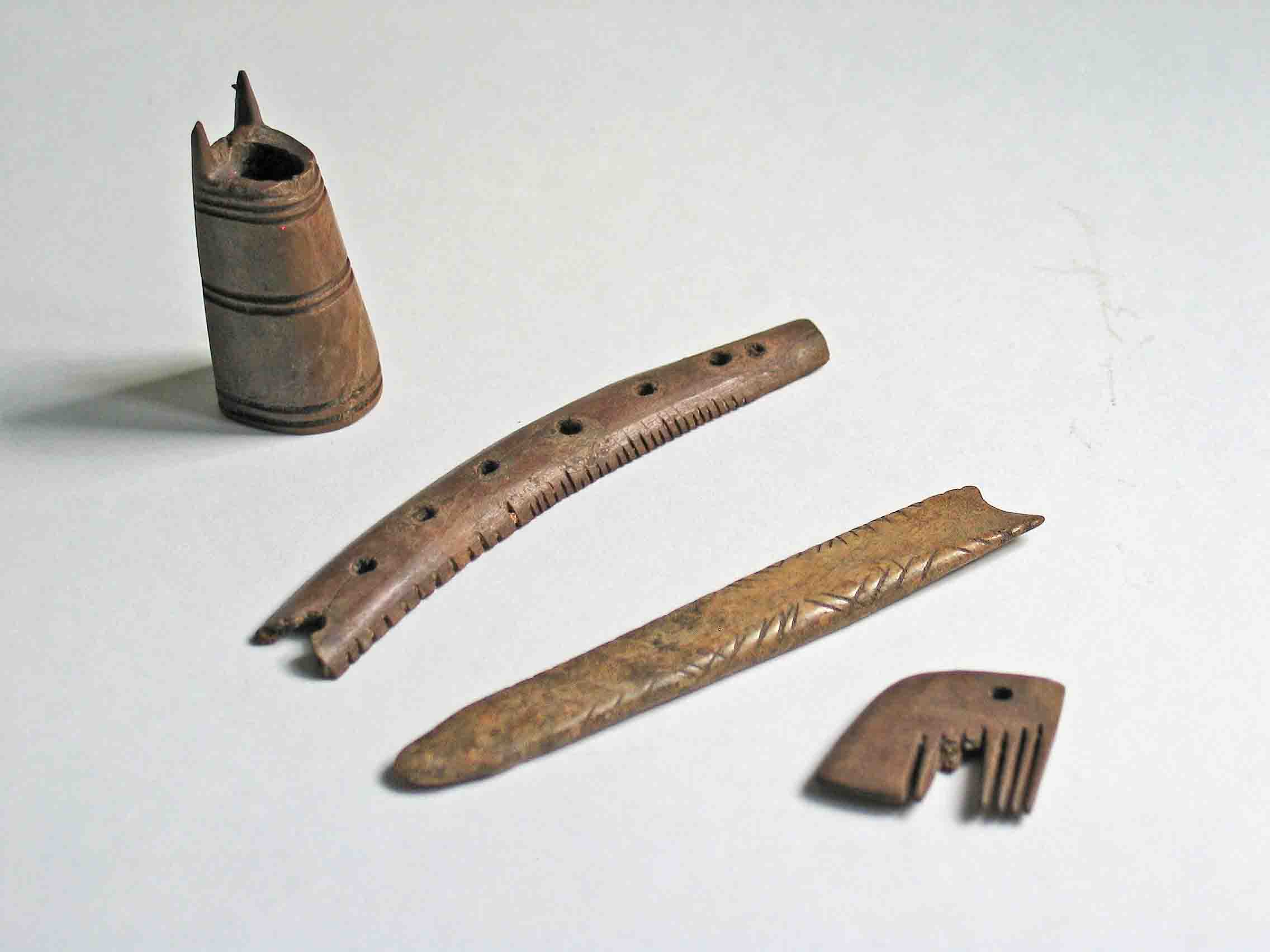Fortress of Antwerp
The Antwerp fortress was originally built in the ninth century and fortified with a palisade. The fortress site was subsequently expanded with the wharf or “Werf” on the Scheldt, a spit in the river where ships could moor.
At the end of the ninth century, the wooden palisade was replaced by an earthen wall with a moat beyond it. The wall was built in politically unstable times, in which the Franks fought against the Vikings. It thus remains to be seen whether the fortress was built by the Franks or the Vikings. A pre-urban trading post with wooden houses/workshops in streets and alleys developed within the enclosure. The inhabitants worked wood, textile, bone and metal here.
In the eleventh century, an imposing limestone wall was probably built along the outside of the earthen wall. Gradually stone buildings with urban functions also appeared. Over time, the fortress lost its function and it was absorbed in the growing medieval city.
During the last quarter of the nineteenth century, the Scheldt quays were re-aligned. A large part of the Antwerp fortress site was demolished, including the wharf and St. Walpurga’s Church.
As a result, the fortress became a forgotten city icon.
A recent archaeological survey has put the fortress site in the spotlight again. The results confirm the existing knowledge as well as yielding new information. In 2010, the Antwerp fortress site became a listed archaeological monument because of its exceptional cultural, historical and scientific value.






